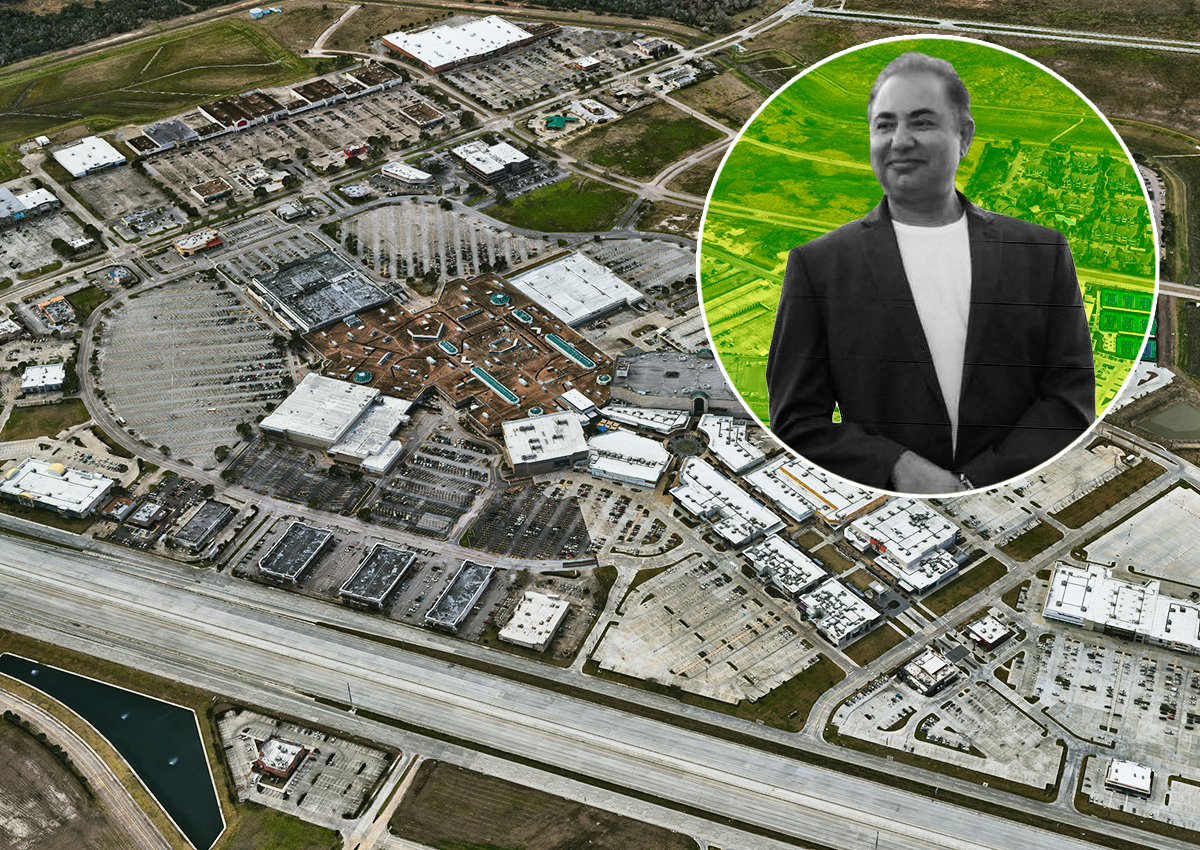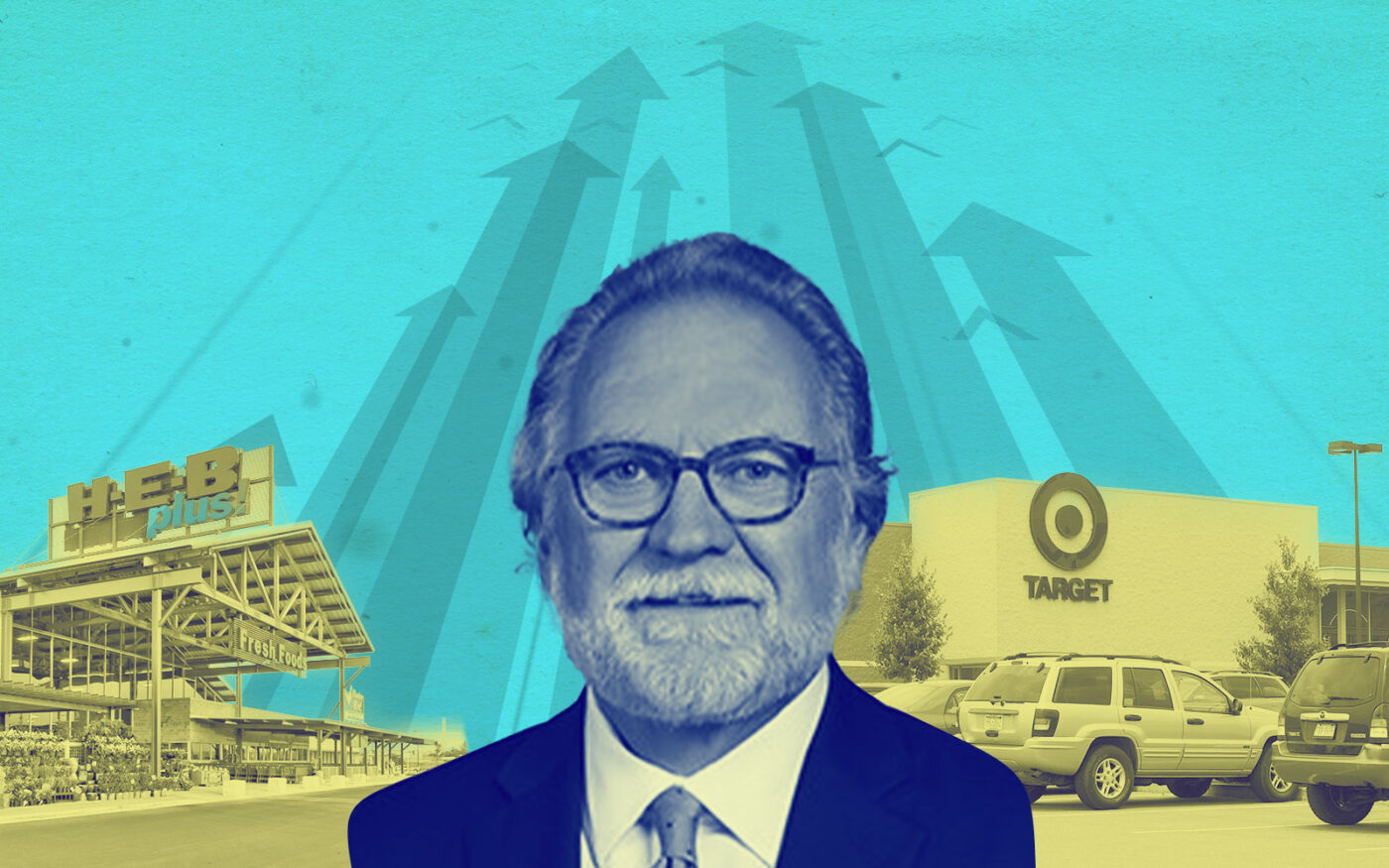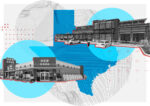 Ashita acquires $40M retail portfolio
Ashita acquires $40M retail portfolio
Trending
Biggest year for Texas retail hurt by costs
Space in high demand as construction and lending costs keep market tight

Weitzman Group’s Robert Young; H-E-B store and Target in background (Getty, HEB, Weitzman Group)
The retail market had itself a record year in Texas.
Retail occupancy in Dallas-Fort Worth held around 95 percent last year for the first time since 1990, according to Weitzman. The rest of the Texas Triangle kept pace with rates ranging between 94 to 97 percent.
“Retail succeeds when it continually transforms to meet the consumer’s preference for convenience and experience,” Weitzman Executive Managing Director Robert Young said during the firm’s annual retail forecast event in Dallas.
The market’s strength stemmed from the industry’s ability to mix “tech with mortar,” meaning the integration of digital retail practices like online ordering implemented into physical retail spaces, Young said.
As populations swell across Texas, Target and H-E-B are sure to follow. Take a peek at market outlooks across the state:
A record year in Dallas-Fort Worth
While Dallas-Fort Worth’s retail sector hit record occupancy and is outperforming the national average, it’s fallen short of its potential because of construction costs, according to CBRE.
The Metroplex has nearly 200 million square feet of retail space, and deliveries fell short last year. In 2021, about 639,000 square feet of new space was delivered, and in 2022 that figure dropped to 538,000 square feet, a new low for the modern Metroplex. The last two years are the only times Weitzman has recorded less than 1 million square feet in retail construction deliveries for the DFW market, Young said.
“Why aren’t we building more space? Well, one reason is the cost of construction. When interest rates on construction loans are up over 300 basis points, it makes it tough to develop,” Young said.
Retail space per capita has fallen 8 percent in Dallas since 2006, compared to 1 percent for the rest of the country, according to CBRE. That could lead to certain submarkets having a lack of retail options.
Groceries are a different story. Nearly 40 percent of retail projects completed in the region last year were grocery stores, according to Weitzman. And no grocer was more heralded or active across DFW than H-E-B, which opened stores in Plano and Frisco and announced plans for locations in Fort Worth and Denton. Leasing is spread fairly evenly across DFW’s submarkets, but grocery-anchored tenants consistently generate the strongest demand because of daily foot traffic.
Most new construction this year will occur in grocery-anchored shopping centers and smaller neighborhood services.
Allen, Celina, McKinney, Prosper and Grand Prairie are well suited for retail growth. While those submarkets are expected to thrive, and leasing will likely remain at record highs, don’t expect new retail deliveries to increase significantly in 2023, as construction costs and interest rates remain high.
Everything’s bigger in Houston
As the Lone Star State’s largest metro by square miles, it comes as no surprise that Houston leads Texas in retail space.
The Bayou City boasted 324 million square feet of space with a record-setting 95 percent occupancy, an increase of 200 basis points year-over-year, according to a fourth-quarter report from CBRE.
Asking rents increased for the second consecutive year, averaging just under $26 per-square-foot, nearing the 2019 average of $27 per square foot.
The post-pandemic economy has been kind to brick-and-mortar shops in the metro, and new construction remained steady, delivering 1.2 million square feet in retail construction in 2022, topping the rest of the state, according to Weitzman.
Houston’s retail construction sector has seen growth surpassing 2021’s development-rich year, indicating a positive outlook for the metro area’s retail market.
H-E-B also dominates here, with 3.9 million square feet in the pipeline across Greater Houston, including a 1 million-square-foot retail center in the town of Manvel, in Brazoria County.
Atlanta-based specialty retailer Floor & Decor is also making big plays in Texas, opening locations in Conroe and Pearland last year, while planning a third in the Sugar Land area, set to begin construction in the fourth quarter, according to public records.
Austin’s outskirts are booming
As populations in cities across Central Texas swell, retail stores are keeping pace.
Almost 1.9 million square feet of retail projects are in the pipeline in the Austin metro area, with 957,000 square feet under construction, according to CBRE. The bulk of new development is happening in the boomtowns outside of Austin proper, as cities like Kyle and Georgetown register as the fastest-growing cities in the country.
Asking rents averaged $22.20 per square foot.
Austin retail neared 97 percent occupancy, with some submarkets like Bastrop County hitting 99 percent. Overall, vacancy declined slightly — 80 basis points — from a year prior. Absorption was just under 100,000 square feet.
However, absorption has not been equal across the city. Since 2020, the Central Business District has weathered negative absorption as 34,500 more square feet have hit the market than have come off it. Meanwhile, a net of 66,000 square feet at East Austin’s retail shops has been taken since then.
Occupancy was slightly lower in San Antonio, where 95.4 percent of retail space was leased, according CBRE. The Alamo City, whose economy depends heavily on tourism and shopping, has 808,000 square feet of new retail space under construction.
San Antonio posted its seventh-straight quarter of positive demand for retail space, notching 329,000 square feet of positive absorption. Demand was strongest in Far West San Antonio and Comal County. The average lease price hit $28 per square foot.
Read more
 Ashita acquires $40M retail portfolio
Ashita acquires $40M retail portfolio
 H-E-B, Portillo’s cause sensation in North Texas retail
H-E-B, Portillo’s cause sensation in North Texas retail
 Austin running out of retail space: Weitzman report
Austin running out of retail space: Weitzman report




